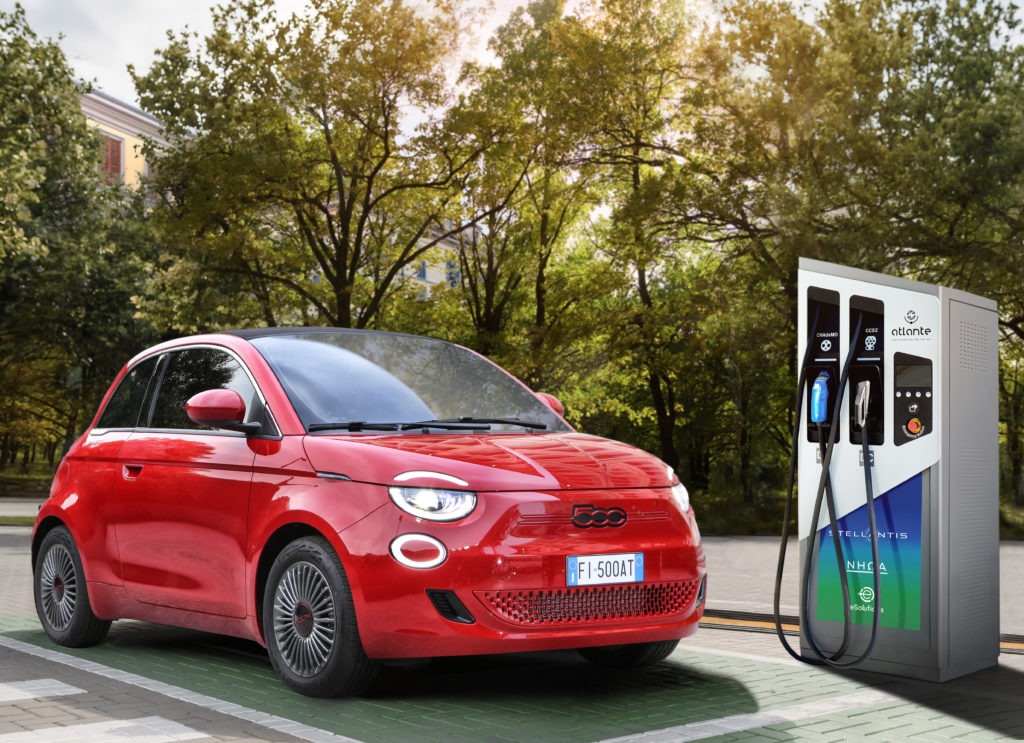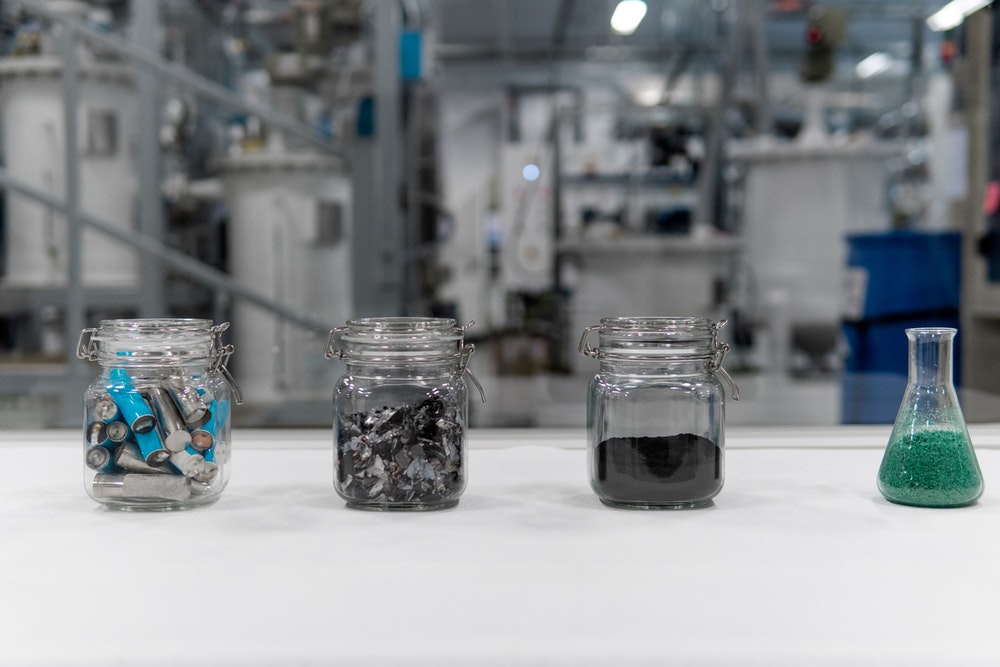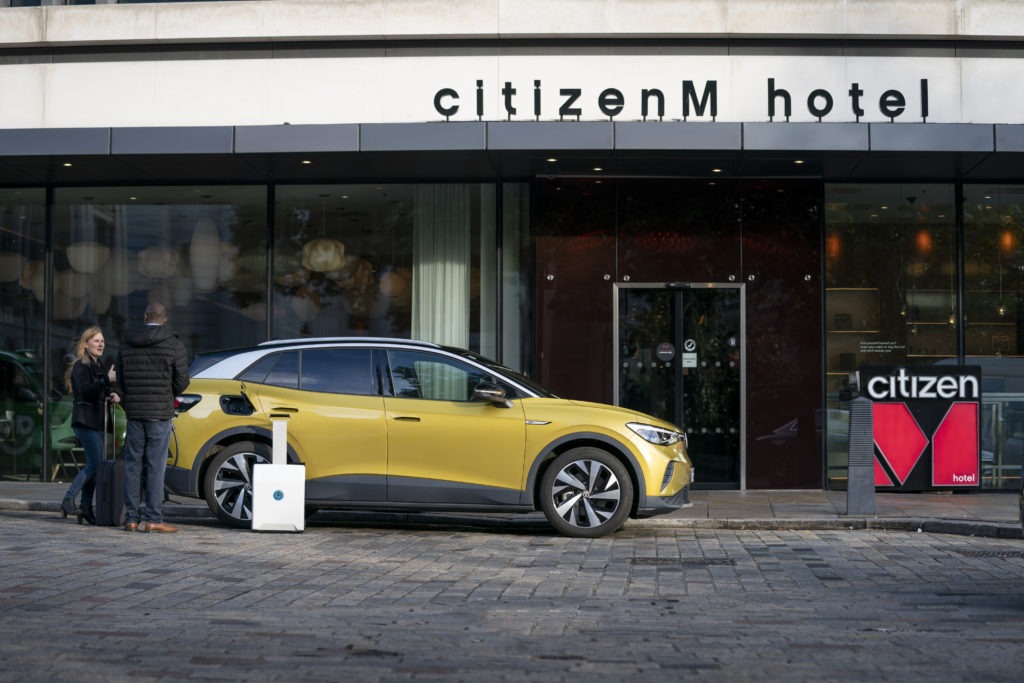Overhauling Europe’s rapid-charging network
19 November 2021

Tighter emission targets and the phase-out of internal-combustion engine (ICE) cars are pushing carmakers and European nations to scale up their electrification ambitions.
Fast-charging networks are crucial to meet infrastructure goals as more drivers switch to electrically-chargeable vehicles (EVs). A look at recent announcements from companies and governments sheds more light on how charging networks are developing across Europe’s booming EV market.
Europe’s largest fast-charging network
Car giant Stellantis plans to build a European public-charging network of 5,000 fast-charging points in urban areas across Italy, France, Spain and Portugal by 2025. The company aims to raise this figure to 35,000 charging points by 2030 – all of which will be vehicle-to-grid-integrated.
The project, dubbed Atlante, will create the largest European fast-charging network for EVs and will be powered by renewable energy and storage systems. Some of the stations will include protective roofs with built-in solar panels and storage systems using second-life batteries. Creating more sustainable charging points in the European grid is of particular importance, considering the recent pledges made at COP26 that called for tighter climate targets.
‘The deployment of public-charging infrastructure is key to helping customers choose to drive an electric vehicle,’ said Anne-Lise Richard, head of global e-mobility at Stellantis. ‘Our aim is to offer a charging experience just as simple, intuitive, convenient and, most of all, as fast as filling up with petrol. An ambitious project, it is going in the right direction to supply power for the batteries used in electric and electrified vehicles.’
The company is collaborating with NHOA Group and Free2Move eSolutions to bring the project to life and is part of Stellantis’ wider electrification strategy. Last month, the first fast-charging station was inaugurated in Piedmont, Italy. Stellantis has now identified an additional 700 sites of which 10% are under development – mainly in Italy. These are expected to become operational within the next six months.
Stellantis said the project is a direct response to the EU’s Fit for 55 plan, aiming to ban the sale of zero-emission cars by 2035. One of the manufacturer’s objectives is to install fast-charge points at regular intervals on major motorways.
The European Automobile Manufacturers’ Association (ACEA) keeps warning that charging infrastructure needs to improve, pointing to the scarcity of fast-charging stations. A look at some figures explains why: of the 225,000 charging points in Europe, only 25,000 are high-powered. The need to increase this number is crucial, given the significant uptick in EV sales.
Heliox provides on-the-go chargers
Catering to the growing demand for ‘on-the-go’ chargers is Netherland-based Heliox. Hailing from a country with the largest number of EV charging stations, Heliox is known for its fast-charging systems.
The company recently expanded its charger portfolio, with the launch of two high-power chargers – the so-called ‘Rapid 50kW’ and the ‘Rapid 150kW Modular’. These are designed for cars and light vehicles and have been locally produced to reduce carbon emissions.
The company said it had developed its latest chargers in part to ease range anxiety among drivers concerned about getting to their destinations. This follows research by AlixPartners, which indicates that 45% of EV owners worry about the availability of charging stations.
Increasing capacity in Europe is key to boosting consumer confidence. The Rapid 50kW can charge two vehicles simultaneously, with one hour of rapid charging providing enough energy for 75 miles. The Rapid 150kW Modular is a high-performance charger and one of its main features lies in its ability to increase the charger’s power to up to 300kW, making it ‘future-proof.’ Charging 20 minutes equates to a 186 mile-range.
Given the rising prices for fuel across Europe, Heliox said demand for non-fuel retail is growing. ‘We are now seeing the effects of the pandemic on the fuel-retail industry, and one of them is a fundamental shift in customers’ and businesses’ behaviour,’ said Michael Coljin, CEO of Heliox Group.
‘Fleets are getting more and more electrified, powered by the trend of delivery and out-of-home consumption. To answer that trend in mature markets such as Europe and the USA, the fuel industry needs to direct its focus from vehicle needs towards customer needs,’ he added.
Modernising infrastructure
Governments in Europe have recognised the urgent need to incentivise the adoption of EVs and keep injecting funds into projects aimed at bolstering infrastructure. Ireland’s Electricity Supply Board (ESB) was awarded £3.27 million (€3.89 million) from the UK’s Levelling Up Fund, and now plans to grow the charging network in Northern Ireland.
The funding aims to overhaul and modernise the region’s EV infrastructure, which includes the expansion of its rapid-charging network and the deployment of high-power charging hubs. ESB operates Ireland’s largest charging network consisting of more than 1,350 charging points. The company called the funding the most significant investment in electromobility in Northern Ireland since the first EV chargers were installed more than a decade ago.
The investment will help double the existing number of rapid-chargers in Northern Ireland. It will also see the launch of five high-power 200kW chargers – a first for the region. These charge several vehicles at the same time and provide an EV with 100km of range in just six minutes.
‘This is very welcome news and will provide confidence to existing and new drivers of electric vehicles here through the enhancement of our charging infrastructure,’ said infrastructure minister Nichola Mallon. ‘A modern and efficient EV-charging infrastructure is essential at this time as we address the climate emergency and make the transition to cleaner and greener modes of transport.’
Speeding up the switch to EVs was a top priority at COP26. Fixing infrastructure issues to ensure there are enough fast-charging plugs and enough power available will help convince more drivers concerned about battery ranges to go green. Ultimately, achieving crucial infrastructure goals in Europe will require increased efforts from all parties involved – notably carmakers, energy companies and governments.



